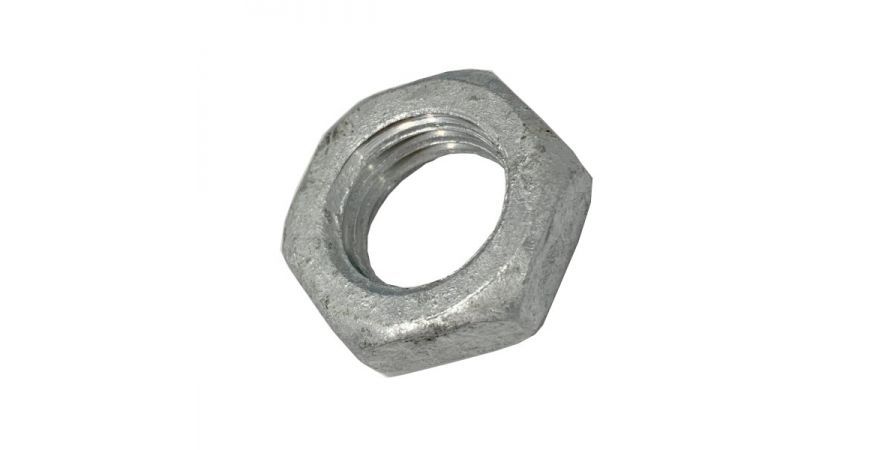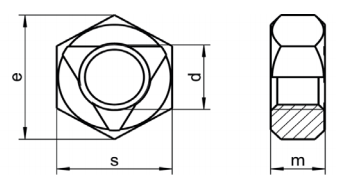
What is DIN 439 ?
Din 439 is the standard for thin Hexagon nuts with metric coarse and fine pitch thread. Often also called half nuts, lock nuts or jam nuts. The standard can be subdivided into two parts DIN 439-1 (chamfered sometimes called 'B') and DIN 439-2 (unchamfered, sometimes called 'A')
DIN stands for "Deutsches Institut für Normung", meaning "German institute for standardisation" and is widely accepted globally, though many are not superseded by ISO standards.
Although the standard has now been withdrawn it is still very widely used. The new standards are DIN EN ISO 4035 and DIN EN ISO 4036 respectively
These are usually used as a lock nut, where it is threaded up against a standard nut locking it into place. Can also be used in circumstances where a standard nut is too thick
DIN 439 Specifications - Click Here To See Our Range
As you will see from the table below these 'half nuts' do have a thickness of 0.5 * Diameter. So an M10 threaded half nut would have a thickness of 5 mm
All measurements in millimetres (mm)
| d | s | e | m |
|---|---|---|---|
| M2 | 4 | 4.32 | 1.2 |
| M3 | 5.5 | 6.01 | 1.8 |
| M4 | 7 | 7.66 | 2.2 |
| M5 | 8 | 8.79 | 2.7 |
| M6 | 10 | 11.05 | 3.2 |
| M8 | 13 | 14.38 | 4 |
| M10 | 17 | 18.9 | 5 |
| M12 | 19 | 21.1 | 6 |
| M14 | 22 | 24.49 | 7 |
| M16 | 24 | 26.75 | 8 |
| M18 | 27 | 29.56 | 9 |
| M20 | 30 | 32.95 | 10 |
| M22 | 32 | 35.03 | 11 |
| M24 | 36 | 39.55 | 12 |
| M27 | 41 | 45.2 | 13.5 |
| M30 | 46 | 50.85 | 15 |
| M33 | 50 | 55.37 | 16.5 |
| M36 | 55 | 60.79 | 18 |
All these dimensions (and others) in the DIN standards do have manufacturing tolerances accurately defined. They can be downloaded at the relevant standards websites. This data is purely informative

